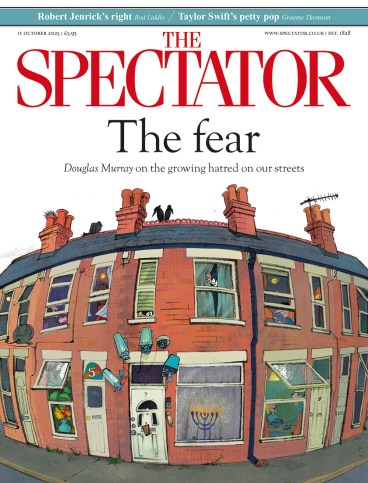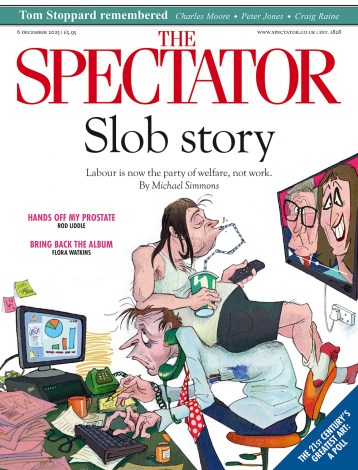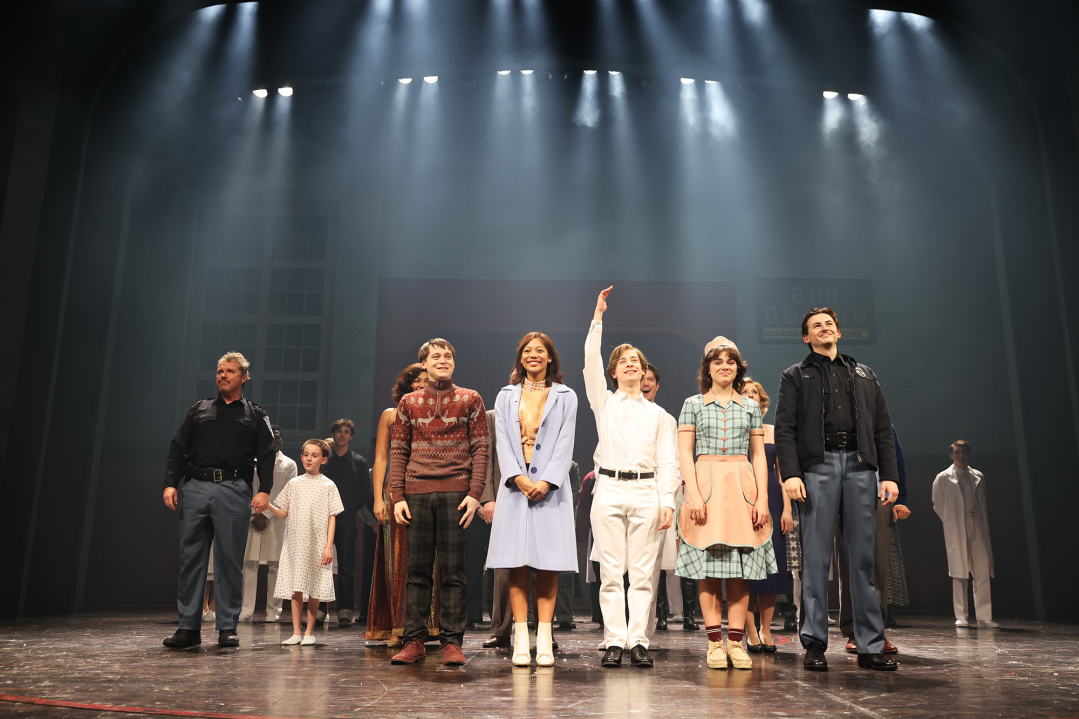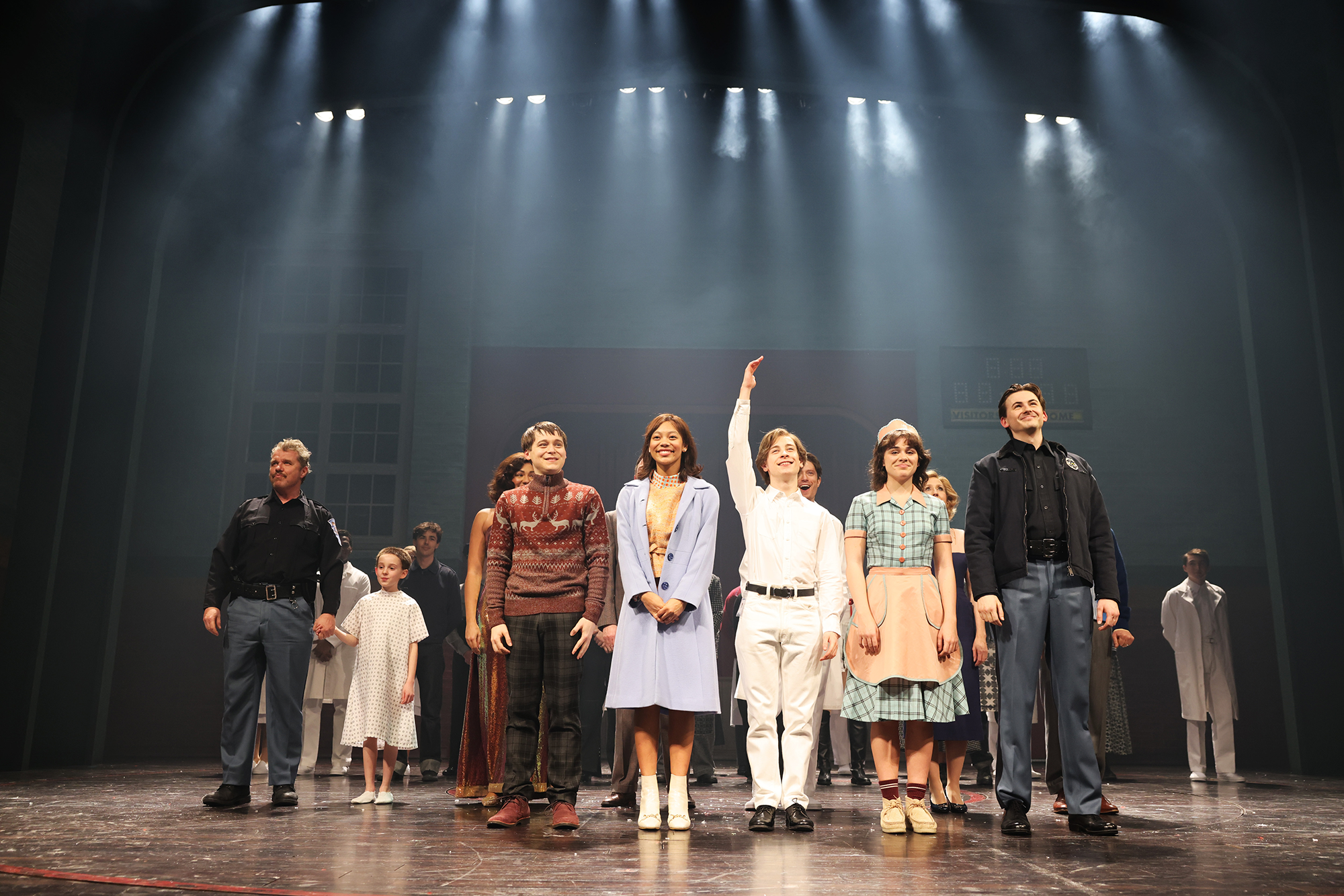
I have my routine down to a science. At 6.59, I’m sitting in the stairwell, typing on my laptop or scribbling in a book. At 7.01, I’m speeding down the hall to Dressing Room 18, where the rest of the girls are semi-apparelled, laughing, blasting out Tyla; or some days, silent, headphones in, munching pre-show snacks and staring blankly into space. From 7.01 to 7.05, I’m putting on my costume as the ambient noise of my cast mates getting dismantled by the demogorgon plays over the intercom. At 7.07, I’m sprinting down the dozens of stairs between Dressing Room 18 and the ground floor. And at 7.09, I’m stepping out on stage, wearing an orange tartan two-piece set and a pair of horn-rim glasses, where 2,024 eyes are watching me.
I’ve been part of the cast of Stranger Things: The First Shadow since last September. At the time of writing, I’ve done the show roughly 287 times. By the time my contract ends next month, I will have done the show approximately 355 times.
Milan Kundera, writing about Nietzsche, says that ‘the myth of eternal return states that a life which disappears once and for all, which does not return, is like a shadow’. That is, something can only be truly real if it is repeated over and over again, for eternity. For the past year, I’ve submitted every aspect of my life – my sleep schedule, my social calendar, my physical and vocal routines, my dreams, my hopes, my prayers – to this machine, this astonishing and prosaic practice of live theatre. Is this life, as Kundera implies, more substantial, more real because it’s been repeated over and over again, its actions worn down into deep physical and psychological grooves? Or is it more of a shadow; is it its own kind of dream?
I was in high school when the first season of Stranger Things came out on Netflix. There’s a moment in the first season when the science teacher, Mr Clarke, explains the concept of alternate dimensions. He uses the metaphor of an acrobat and a flea walking across a tightrope to explain how there might be many additional dimensions ‘coiled up’ at a microscopic scale. If you could find a way to access these dimensions, you might enter a zone where the usual rules of time and space no longer apply.
Such has been my experience in the Upside Down – the name of the parallel universe in Stranger Things – doing the same show eight times a week for a year. This experience is, I think, the closest I’ll ever come to experiencing an eternal recurrence of the Nietzschean sort, to existing in an alternate dimension that operates according to a different spatio-temporal logic.
Backstage everything is choreographed — not just the props, but passes in the hallway, jokes by the water cooler
Building a machine of eternal recurrence is, of course, scientifically impossible. But we can imagine what some of the features of such a machine might be. In order to build a machine of eternal recurrence, you would need to find a way to keep entropy at bay. In the real world, time passes because the entropy – or disorder – of the universe is always increasing. But if you could find a way to keep entropy at zero, the direction of time itself could theoretically be changed. This is, in a symbolic sense, what is happening in the practice of live theatre. It’s a bounded ecosystem where chaos is held at bay in an intricate dance of sequenced action, creating the conditions for eternal recurrence. In this sense, we are actually inhabiting some kind of Upside Down, where the usual rules of time and space do not apply.
Creating the conditions for zero entropy is a delicate task. Backstage, the show runs like a Rube Goldberg machine. Everything is choreographed – not just the props and the sets and the quick changes – but the passes in the hallway, the jokes by the water cooler, the doors held open so people can sprint to their cues. In this sense, we become incredibly dependent on one another. For every beat that happens on stage, there are 50 tiny metaphorical batons being passed off stage in preparation for the next moment. It’s a machine of astonishing coordination, perfected through endless repetition.
Bound as we are by this backstage quadrille, we become a kind of hivemind. Rhythms and energies are contagious. Things go viral in the Upside Down: especially among the girls in Dressing Room 18. Jokes, weird voices, tiny snippets of songs will lodge themselves in the collective semi-conscious and suddenly everyone is saying something or singing something without really knowing why. The list of things that have at various points gone viral includes the ‘Defying Gravity’ riff from Wicked, an 11th-century ballad about springtime, Hugh Jackman’s vibrato in Les Misérables, assorted TikTok noises, the phrase ‘gagagagaga’. Right now, we’re fighting a losing battle against the Wii song.
Time, in the normal world of the Rightside Up, is a resource: it is something we spend. Walter Benjamin said that the modern world is characterised by this experience of ‘homogeneous, empty time’, time as a neutral container for events, without its previous layers of sacredness and meaning. This would be in contrast to what philosopher Charles Taylor calls ‘gathered time’. Gathered time is time that binds us in relationship to one another and to higher orders of meaning.
There is a subtle relationship between time and freedom. An asynchronous world is one in which I am maximally free. I can do what I want, where I want, whenever I want. The best image for modern urban life is the airport terminal. We rush around as atomic units; proximate, but not coordinated. Crowded, but alone. In this sense, going to the theatre is a profoundly anachronistic experience. The theatre gathers time. For three hours, all of us – cast, crew, wardrobe, wigs, hair, make-up, lights, sound, front of house, audience – are bound together in a single timestream. It really is like inhabiting a different dimension: an escape from homogeneous, empty time into a zone where time is shared.
There are costs, of course, to living this way. Outside of the Upside Down, entropy still reigns; past pressing into future. It hits me most on Sunday evenings, going home among the trails of people wrapping up their weekend activities: walking dogs or chatting at a pub. I get a strange sense of retroactive FoMo, of all the things that might have passed me by while I was living down there.
But it’s worth it. It really is. The best time of the show, I think, is the curtain call. I get this particular feeling sometimes when I’m in the back row and I can see everyone else in front of me, their faces lit up in the golden light. Sometimes I look at them and it feels like my heart is going to burst open. From the audience’s perspective, they look confident and self-assured. But up here I know the grit it takes to do this for an entire year. I look at them and think about how hard it is and how there they all are, smiling and waving in the golden light. And it’s not fake. It’s not forced. It’s athletic. It’s full of spirit and fortitude and will and great beauty.








Comments